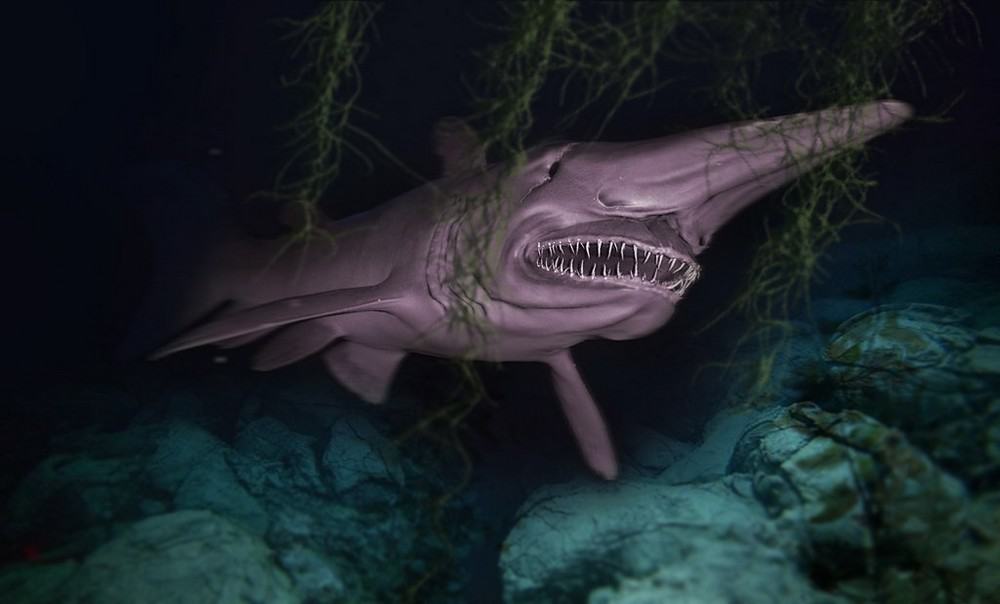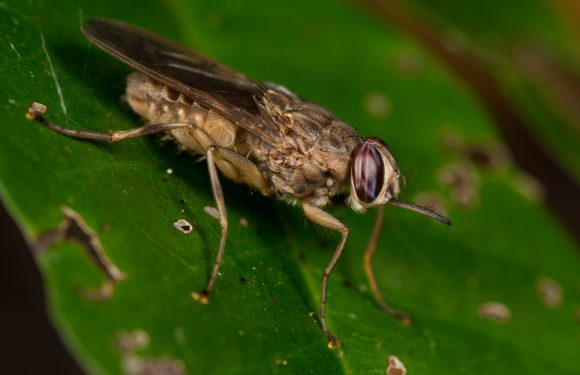
When we think of the ocean’s inhabitants, images of sleek, shimmering fish come to mind. However, not all fish conform to our ideals of beauty. These so-called “ugly fish,” have unconventional appearances, which challenge our perceptions and raise questions about beauty and ugliness in the natural world.
What Makes a Fish “Ugly”?
Human aesthetic judgments are often influenced by symmetry, color, and proportion—features that signify health and vitality. Fish that deviate from these norms with features like disproportionate bodies, lack of vibrant colors, or seemingly disfigured faces are often branded as unattractive. However, these peculiar traits are typically evolutionary adaptations that have enabled these creatures to survive in their specific environments.
The World’s Ugliest Fish
Bumphead Parrotfish

The bumphead parrotfish has a prominent bulge on its forehead, from which it derives its name. This species is one of the largest parrotfish, reaching lengths of up to 4.3 feet (1.3 meters) and weighing over 75 pounds (34 kg).
Bumphead parrotfish feed on large quantities of algae and dead coral, excreting fine sand that helps build islands and beaches. They are found in the reefs of the Indo-Pacific, often in large, socially complex groups. At night, these fish wrap themselves in a cocoon of mucus which masks their scent from predators.
Batfish

Batfish are not your typical looking fish. With flattened bodies and broad, wing-like pectoral fins, they resemble bats as they “walk” rather than swim across the ocean floor.
These fish are found in tropical and subtropical oceans worldwide, usually dwelling at depths up to 1,300 feet (400 meters). Their diet mainly consists of small invertebrates, which they lure using a modified fin ray that functions as a fishing rod. Once the prey approaches, the batfish snaps it up quickly with its mouth.
Striated Frogfish

The striated frogfish, also known as the hairy frogfish, stands out due to its shaggy protrusions, which help it camouflage in its coral or rocky reef habitat. This species can change color to blend into its surroundings, a process that can take several weeks.
Found in tropical and subtropical waters around the globe, striated frogfish use an illicium (a modified fin spine) and esca (lure) on their heads to attract prey. Their diet consists mostly of fish and crustaceans, which they swallow whole with their expandable mouths. Striated frogfish are solitary creatures, coming together only to breed. The female lays a mass of eggs attached to her body, which the male then fertilizes.
Blobfish
The blobfish resides in deep waters off the coasts of mainland Australia and Tasmania. This fish is primarily known for its gelatinous consistency, which is slightly less dense than water, allowing it to float above the sea floor without expending energy on swimming.
The blobfish’s appearance on land is drastically different from its look in its natural habitat due to the decompression damage it suffers when brought to the surface. It was voted the world’s ugliest animal in 2013 by the Ugly Animal Preservation Society, a campaign designed to draw attention to less aesthetically pleasing endangered species.
Wolffish

The wolffish has a fearsome appearance. Its strong jaws are equipped with powerful, crushing teeth that are used to feed on hard-shelled creatures such as sea urchins, crabs, and mollusks. These fish inhabit the cold waters of the North Atlantic, dwelling at depths up to 1,600 feet (500 meters).
Wolffish have antifreeze-like blood proteins allow them to survive in freezing temperatures. They are generally solitary, only coming together to mate, a process during which they lay eggs in hidden crevices.
Sloane’s Viperfish

Sloane’s viperfish are one of the most intriguing deep-sea predators. It has a large mouth and fang-like teeth, which are used to impale prey. This species can be found at depths of up to 9,800 feet (2,800 meters) in tropical and temperate waters worldwide.
The viperfish’s body is equipped with photophores, which produce light to attract prey and communicate with potential mates. They feed primarily on crustaceans and smaller fish, striking with incredible speed and precision. Sloane’s viperfish are believed to have one of the longest lifespans among deep-sea fish, potentially up to 30 years.
Anglerfish

Anglerfish are among the most interesting denizens of the deep sea. They have a bioluminescent lure that grows from their foreheads, used to attract prey in the pitch-black waters.
These fish are found in the dark, cold depths up to 9,800 feet (3,000 meters) below the ocean’s surface. The females are notably larger than the males, which are tiny. Males often attach to the females during reproduction, eventually becoming a permanent appendage that supplies sperm in exchange for sustenance.
Anglerfish’s diet includes fish and other sea creatures that are drawn by their light-emitting appendage. They have an incredibly flexible stomach and a large mouth, which enables them to swallow prey up to twice their size.
Hagfish

Hagfish, often referred to as slime eels, are primitive sea creatures known for their disgusting defense mechanism—secreting copious amounts of slime. This slime can clog the gills of predatory fish, providing the hagfish a chance to escape. Therefore, hagfish are not typically preyed upon.
They inhabit cold ocean waters worldwide, dwelling mainly on the seabed where they feed on dead or dying fish. Hagfish are jawless; they utilize a set of rasping plates to enter the bodies of their prey. Despite their simple nervous system, studies suggest hagfish are more closely related to vertebrates than to other invertebrates. The leather-like skin of hagfish is used in the fashion industry, particularly in the creation of durable wallets and belts.
Monkfish

The monkfish has a monstrous appearance, with a gaping mouth and expandable stomach. They can grow up to 200 pounds (91 kg) and live in depths up to 1,900 feet (600 meters). This fish is found in the Atlantic Ocean, from the coast of Norway down to the Mediterranean.
Monkfish spend most of their time embedded in sandy or muddy substrates, ambushing prey that swims by. Their diet is carnivorous, feeding on fish, shellfish, and even seabirds. Commercially, monkfish is valued for its firm, lobster-like tail meat, often referred to as “poor man’s lobster.”
Stonefish

The stonefish is the most venomous fish in the world, with venomous spines integrated along its dorsal fin. The venom of the stonefish causes extreme pain and can be fatal if not treated promptly, leading to its reputation as a dangerous marine creature. They have few natural predators.
Stonefish use their exceptional disguise to ambush prey, primarily fish and crustaceans, sucking them into their mouths in a fraction of a second. They are capable of surviving out of water for up to 24 hours, making them occasionally found in puddles at low tide. They can grow up to 20 inches (50 cm) in length and are primarily found in the coastal regions of the Indo-Pacific.
Fangtooth
Fangtooth fish are among the deepest-living fish ever discovered, dwelling as far as 16,400 feet (5,000 meters) below the surface. Known for their menacing appearance, fangtooths have oversized teeth and a stout, compressed body. Their large teeth, which are so long they cannot close their mouths completely, are ideal for capturing the small fish and crustaceans they eat. Despite their fierce look, they are small, usually around 6 inches (15 cm) in length, which makes them relatively harmless to humans.
Fangtooths have a slow metabolism suited for the scarce food resources available in deep-sea environments. These fish are solitary creatures, encountering mates solely for the purpose of reproduction. Remarkably, their bodies are adapted to withstand the immense pressure of the deep sea, but they do not survive well in shallower waters or in captivity.
Frilled Shark

The frilled shark is often described as a “living fossil” because of its ancient lineage and primitive features, resembling fossils dating back over 80 million years. This shark is rarely seen by humans, inhabiting depths of up to 4,900 feet (1,500 meters). It is named for the frilly appearance of its gills, with six pairs of gill slits—the first pair meeting across the throat.
Frilled sharks prey on squid, other sharks, and deep-sea fish, capturing them by bending their body and lunging forward like a snake. This species can grow up to 6.6 feet (2 meters) in length and has a dark, eel-like body that allows it to blend into the deep-sea environment.
Lancetfish
Lancetfish have a prehistoric look—large eyes, fang-like teeth, slender bodies, and a dorsal fin which runs almost the length of their body. These fish are found in all oceans, except the polar regions, typically inhabiting mid-water depths up to 6,000 feet (1,830 meters).
Lancetfish are opportunistic feeders, eating whatever they can catch, including smaller fish and cephalopods. They can reach lengths of up to 6.6 feet (2 meters). Contrary to their fierce appearance, lancetfish are known to be sluggish and are often preyed upon by larger predators.
Giant Grenadier

The giant grenadier is one of the largest species of rattail fish, predominantly found in the deep waters of the Pacific Ocean. These fish are characterized by their large heads and slender, tapering bodies that end in a rat-like tail, which is where their nickname originates.
Giatn grenadiers inhabit depths between 650 to 19,700 feet (200 and 6,000 meters), where they scavenge on the ocean floor, consuming a variety of fish, crustaceans, and squid. These fish can grow up to 7 feet (2.1 meters) in length, making them one of the larger deep-sea creatures.
Goblin Shark

The goblin shark is a rare species of deep-sea shark, often called a ‘living fossil’ due to its primitive features. This shark’s most notable characteristic is its protrusible jaw, which can snap forward to catch prey like a spring-loaded trap. It inhabits ocean depths greater than 300 feet (100 meters), primarily around continental shelves and submarine canyons.
The goblin shark’s diet consists mainly of deep-sea cephalopods, crustaceans, and bony fishes. Its pink skin is due to blood vessels underneath a semi-transparent epidermis, giving it a somewhat eerie appearance. Goblin sharks are occasionally caught by deep-sea fishermen, yet little is known about their behavior due to their elusive nature. They grow to a length of 13 feet (4 meters).
Stargazers
The stargazer has the ability to deliver electric shocks. It has specialized organs located behind its eyes that can generate electric fields to stun prey or deter predators. The shocks are typically moderate and not lethal to humans but can be unpleasant if encountered.
Found along the Atlantic coast of the United States, northern stargazers live in both sandy and muddy environments at depths usually shallower than 120 feet (37 meters). This fish embeds itself in the seabed, using its upward-facing eyes to spot prey and its mouth to quickly suck in unwary victims. They feed on crustaceans, small fish, and anything else they can surprise from their buried position.
Sheepshead Fish

The sheepshead fish is known for its human-like teeth, which are adapted to crush shells of crustaceans and mollusks. This fish inhabits the Atlantic coast of North America, particularly around piers, jetties, and other coastal structures. Their black and white stripes provide camouflage among the rocks and oyster beds.
Sheepshead are opportunistic feeders, primarily dining on oysters, clams, crabs, and mussels. They can grow up to 30 inches (76 cm) and weigh over 20 pounds (9 kg), though such sizes are rare.
Psychedelic Frogfish

The psychedelic frogfish is notable for its body shape. Its body is globular and lacks scales, covered instead by a mucous-like substance that enhances its bizarre appearance. The fish is small, typically around 3 inches (7.6 cm) in length, making it one of the smaller frogfish species.
Discovered relatively recently, in 2009, off the coast of Indonesia, this fish has quickly captured the interest of marine biologists. It “walks” along the seabed using its pectoral fins, feeding on small fish and crustaceans.
Lamprey

Lampreys are a unique group of jawless fish that lack paired fins and scales. Instead, they feature a smooth, elongated body that resembles that of an eel. Their most notable characteristic is their distinctive mouth: a toothed, funnel-like structure used to attach to other fish. Once attached, lampreys use their rasping tongue to penetrate the host’s skin to consume blood and body fluids.
The life cycle of a lamprey involves several stages. They begin their life as burrowing larvae in soft riverbed sediments. This larval stage can last several years before they transform into adults. Upon reaching maturity, lampreys begin their parasitic phase. After one to two years of parasitism, they return to freshwater to spawn and subsequently die shortly after reproduction, concluding their life cycle.
Barreleye Fish
The barreleye fish is one of the ocean’s most unusual creatures. The most striking feature is undoubtedly its transparent head, through which its internal mechanisms, including the barrel-shaped eyes, are visible. These eyes are highly specialized and capable of rotating within this transparent, fluid-filled shield. Initially, it was believed that these eyes could only look upward, but recent observations have shown that they can rotate forward as well.
The barreleye resides in the deep waters of the Pacific Ocean, ranging from 2,000 to 2,600 feet (600 to 800 meters). It uses its sensitive eyes to spot the silhouettes of prey against the faint light from above. Once it identifies a target, the barreleye positions itself directly underneath and then moves upward to consume the prey. Its transparent head likely serves to shield its eyes from the stinging cells of jellyfish while allowing it to feed on them safely.


































































